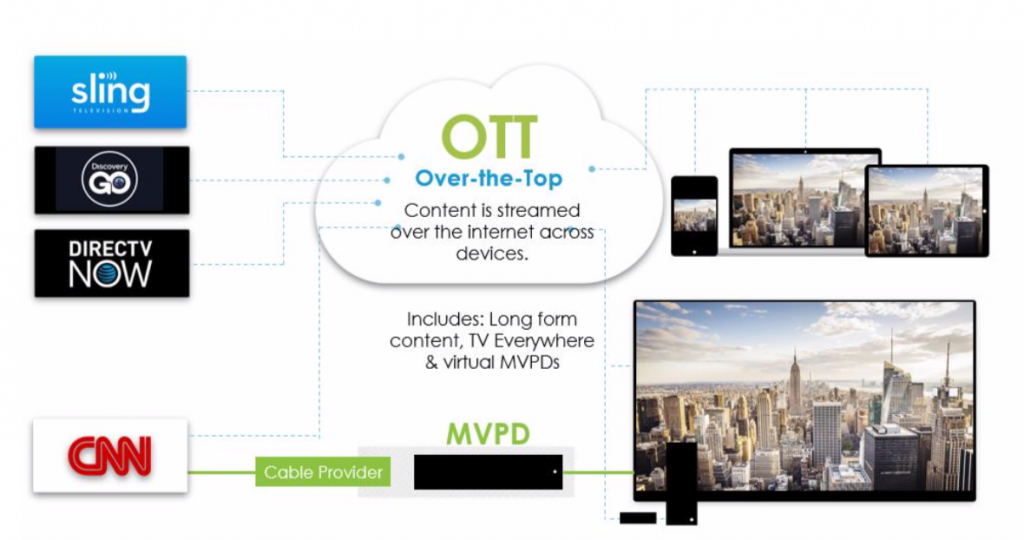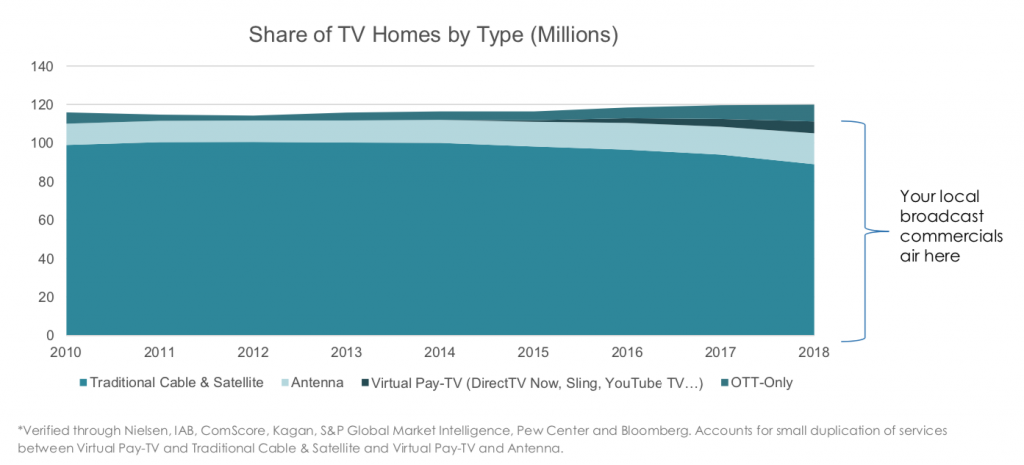Our R&A Educational Series launched with an informational webinar debunking the myths and sharing the latest research on TV streaming and the impacts on local TV advertising. This fragmented market of over-the-top or TV streaming content leaves many business owners with questions, so we’ve recapped three things to understand when dipping your toes into this marketing mix.

With usage, viewership and demographics changing across the traditional TV landscape, it is natural to wonder whether your ads are being streamed across devices, how to tap into these additional viewers or whether you should forego TV all together.
Given the amount of misinformation and the industry complexities that cause a knowledge gap for those outside of the realm of media buying, it is understandable. So let’s break it down and start by defining over-the-top and connected TV:
A connected TV (CTV) has an internet-based connection with an interface that allows viewers to access over-the-top (OTT) content that is then streamed through popular applications such as Netflix, Hulu, YouTube, Sling and more. OTT content can be accessed on a laptop, mobile device, table or connected TV.

Despite the decline in traditional cable and satellite subscribers, it is not all “gloom and doom.”
So what is a local business owner like yourself supposed to do?
The first step we take is analyzing the effects on reach, including the percent of households that do not have access to live TV (OTT-only). Next, we look at how the trends in video usage have played a role. The important thing to note is just because people subscribe to traditional pay-TV services does not mean they use those services just as much as they used to.

The outline below delves more deeply into key insights and information to keep top-of-mind:
KEY TAKEAWAYS
- Reach & Demographic Shifts
- Despite the increase in streaming devices/content, traditional TV still has one of the top reaches of U.S. adults each week.
- Time spent on Live + Time-Shifted TV have declined. While consumers are watching more video content than ever across all demographics, they are narrowing their choices on what, how and when to watch. This is why it is vital to monitor local TV program ratings across targeted demographics to determine which have less volatility.
- Virtual Pay-TV or Skinny Bundles (DirectTV Now, Sling, YouTube TV…) are helping make-up for the losses in traditional Pay-TV subscribers. Antenna viewership has seen significant increases as well.
- 80% of OTT viewing is through Hulu, Netflix, Amazon and YouTube.
- Local-Level Opportunities for OTT and CTV
- Be mindful of the reselling layers if purchasing direct through media holding companies. Ask your provider where the inventory is sourced and if platform/publisher delivery data is available.
- Add content verticals to your strategy… (e.g. lifestyle/sports).
- Cost-per-thousand impressions (CPM) can vary widely depending on the inventory purchased and the mix of Mobile/Tablet/Desktop inventory.
- Benefits & Challenges to Purchasing OTT and CTV
Benefits
- Less advertising clutter; high co-viewing and brand engagement
- Cross-platform retargeting capabilities
- Increase frequency of other household targeted campaigns (geo-fencing, direct mail, etc.)
Challenges
- Lack of uniform targeting, scale, measurement and attribution.
- High targeted, cost-per-thousand (CPM)
We hope you found these insights helpful when considering how to launch or revamp your TV streaming and advertising marketing strategy.
Read more related to this topic: we’ve taken a look at where television has been in the marketing industry and where it is headed.
– The R&A Team

